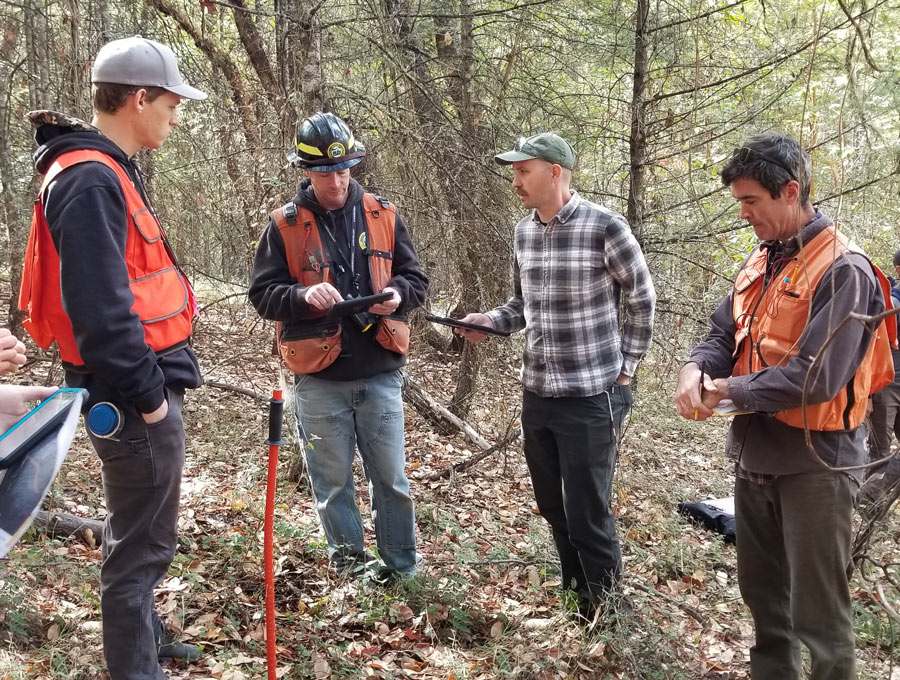Science Delivery
To guide and provide a foundation for our programs, SOFRC relies on the work of local, state, and national scientists to tap into the most recent and best peer-reviewed science. Our approach to collaborative forest management incorporates the ecological, social, and economic science of restoration ecology while integrating our partners and communities’ diverse perspectives, issues, and concerns.
Since its inception, SOFRC has been at the forefront of bringing science to Rogue Valley forest practitioners and communities concerned about forest health and wildfires.
For example, in 2013, SOFRC collaborated with partners to produce one of the first climate action plans for the Rogue Basin, The Rogue Basin Action Plan for Resilient Forests and Watersheds in a Changing Climate (Gwen Myer, 2013). We were early adopters working with agencies and other concerned citizens to address climate adaptation activities. In 2014, SOFRC prepared an Illinois Valley timber assessment to evaluate the need for restoration and opportunity for harvests that balanced the social, economic, and social aspects of forest management in the Illinois Valley.
For over ten years, the Southern Oregon Forest Restoration Collaborative has worked with state and federal agencies such as the Oregon Department of Forestry, Oregon State University, Oregon Watershed Enhancement Board, Medford Bureau of Land Management, US Fish and Wildlife, and the Rogue River Siskiyou National Forest to integrate these social, ecological, and economic aspects into forest planning, implementation, and monitoring. These partnerships led to forming a technical team working on the Rogue Basin Cohesive Forest Restoration Strategy (RBS), completed in 2017.
The forest science is clear: fire is critical for healthy forests, but certain overgrown forests need strategic thinning and controlled burning.
There is scientific consensus around the tools that the Strategy recommends: We can reduce wildfire intensity, enable safe, effective fire suppression, and increase landscape resilience with strategic thinning followed by controlled burning. Strategic, ecological thinning can expand the areas available for controlled burning, which provides communities and managers with more options to reduce smoke impacts.
Following years of collaboration and technical development, the Rogue Basin Strategy is a comprehensive science-based roadmap for healthier forests and communities across 4.6 million acres of Southern Oregon.

Our goal is to see proposed solutions and demonstrated science delivery evolve into statewide policy and the institutionalization of integrated restoration practices.
Multiparty Monitoring
In 2012 SOFRC established a multiparty monitoring team for the BLM Pilot Joe project that incorporated the interests and need for information from multiple organizations and individuals. Monitoring collects data to determine if work was implemented as prescribed, if it meets the project’s objectives, and determines the project’s long-term outcomes. Adaptive management takes this information and uses it to course correct practices in the future.
These efforts are time-consuming, costly, and in a world where treatments and implementation are prioritized (understandably), the funding to fully support this work is highly dependent on grants and the generosity of funders. However, the careful analysis and reliance on sound science are efficient over time and provide cost savings in the long run.
Our goal is to see this science delivery evolve into policy and institutionalization of integrated restoration practices. We’ve laid out some of the solutions and demonstrated the science. Can we incorporate the practices into our local organizations, carefully weigh the cost/benefits, and build community support?
Multiparty Monitoring documents whether ecological and social objectives are being met in both the short and long term. Monitoring also informs management so that updated practices can be applied and refined. Long-term monitoring can assess whether the key restoration principles are having the desired ecological effects.
Resources
Rogue Basin Cohesive Forest Restoration Strategy
The Rogue Basin Strategy is a culmination of involvement with multiple partners over several years to lay out a strategy that incorporates objectives for forest resiliency, forest health, spotted owl habitat recovery, climate resiliency, and utilizes economic, wildfire risk reduction analysis modeling and a Marxan optimization model to recommend high priority areas for restoration.
Action Plan for Resilient Watersheds & Forests
Southern Oregon Forest Restoration Collaborative collaborated with several partners, and under the guidance of Climate Solutions University, produced the Rogue Basin Action Plan for Resilient Forests and Watersheds in a Changing Climate, an all lands approach to forest management to increase forest and watershed resilience to climate change for the Rogue Basin.
Canadian Journal of Forest Research
SOFRC Executive Director, Terry Fairbanks and Board Member, Darren Borgias co-authored an article for the Canadian Journal of Forest Research describing the Rogue Basin Strategy effort. “Integrating Forest restoration, adaptation, and proactive fire management: Rogue River Basin case study” demonstrates the collaborative development of dry forest management in southwestern Oregon.
